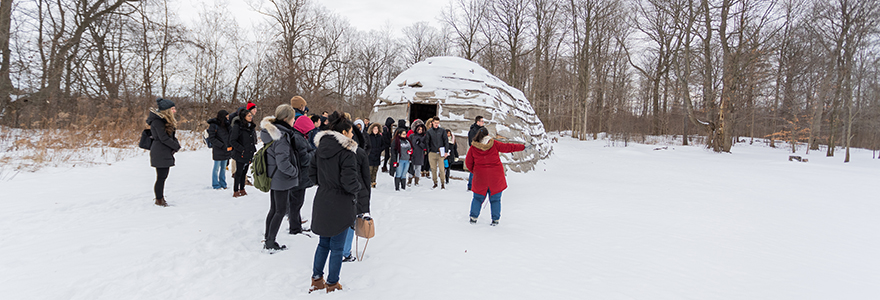Hilary

Experience: Environmental Science and Sustainability 1021G (at Huron)
Most university learning takes place inside the classroom, but I recently went on a field trip to the Museum of Ontario Archeology in London, Ontario for my first-year Environmental Science course at Huron College and found the site visit to be a wonderfully enriching experience. The field trip expanded on a focus in our course on the symbiotic relationship between early ancestors and their environment. In class, we had been examining environmental changes and the subsequent impact they had on early cultures, as well as cultural changes that, in turn, impacted the environment. The museum highlighted the dynamic nature of this relationship through its historical documentation of the various eras of human development including the hunter-gatherer era, the agricultural revolution, and the industrial revolution.
Informed guides explained that the museum’s purpose is to bring history to life through the study, display, and interpretation of the human occupation of Southwestern Ontario over the past 13,000 years; as part of our visit, we explored a preserved longhouse, as well as had an opportunity to learn about the early technology developed by its inhabitants. It was positively fascinating to stand inside the longhouse, as well as see and touch recovered artifacts such as animal bones that were once used as needles to sew together animal hides. Seeing these structures and tools made me appreciate the great level of ingenuity and skill possessed by earlier people in the region.
Not only was the museum visit valuable in furthering my knowledge about an earlier historical time and its people, but it was especially helpful in bringing the content of the Environmental Science course to life through the exploration of tangible objects and materials. This real-life learning provided an opportunity to connect the past to the present, as well as to connect the classroom to the world it studies and illuminates.

